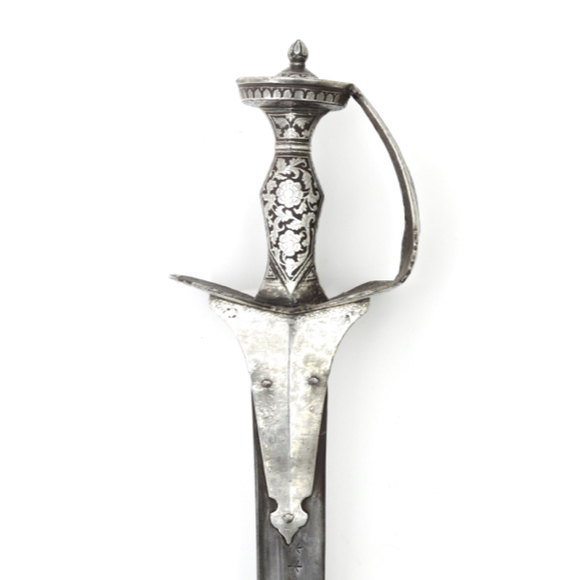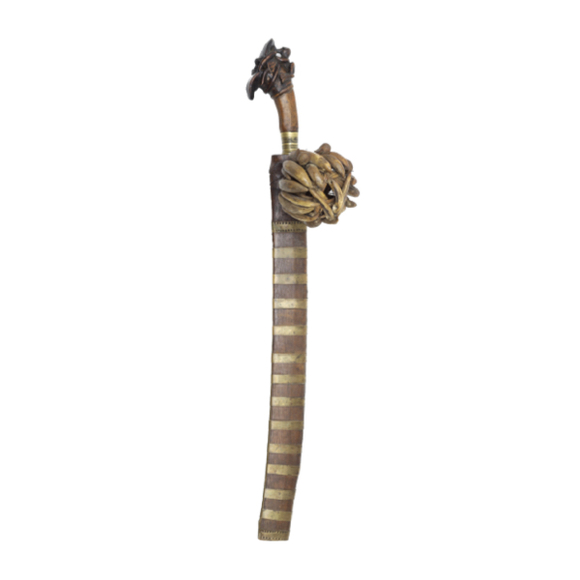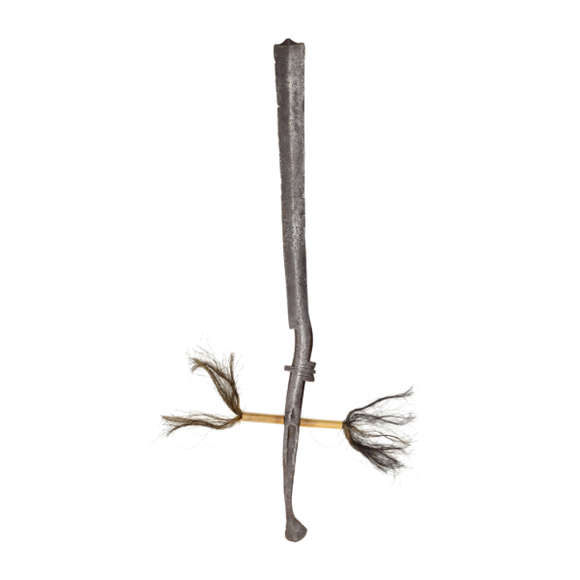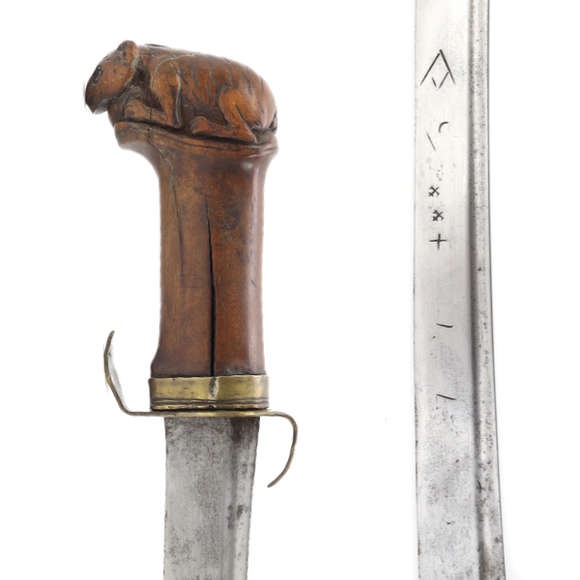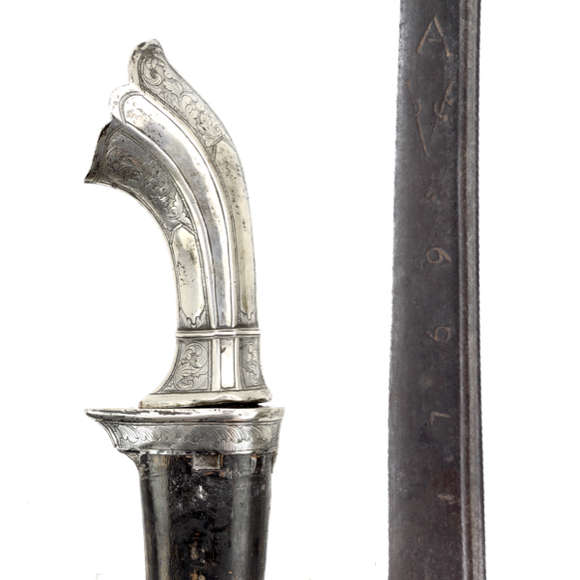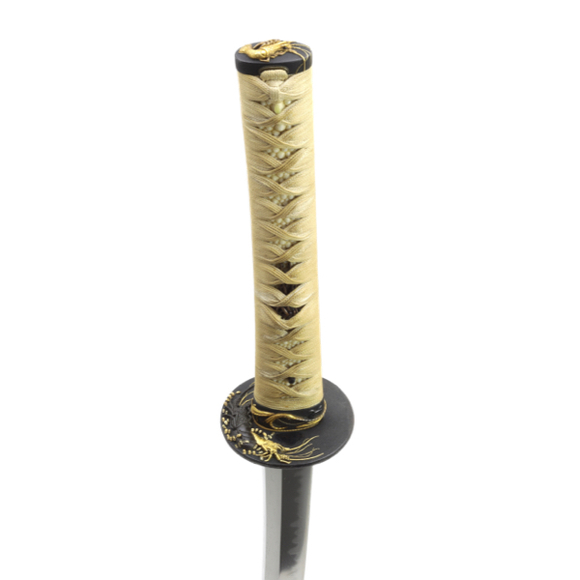Language: Sanskrit
Origin: Dhanurveda of circa 1100-800 B.C.
Description
Paṭṭiśaḥ (पट्टिश) first appears in the ancient text on archery and warfare, Dhanurveda of approximately 1100-800 B.C. It is defined here as a spear with a sharp edge or some other weapon with three points.1 It also appears in the Itihasa as a "spear with a sharp edge" and the weapon carried by the Hindu God Shiva. From these descriptions, it sounds like the item was originally a trident or triśūla which is indeed the weapon Shiva is often depicted with.
Somehow the meaning changed and today the word paṭṭiśaḥ (पट्टिश) is primarily used for a type of sword with large, double edged spatulate blade. They are a form of early khanda (खंडा) that does not yet have the basket hilt that becomes common on these from the 17th century onwards.
It is alternatively written as paṭṭīśaḥ (पट्टीश), paṭṭisaḥ (पट्टिस) or paṭṭīsaḥ (पट्टीस).2

A South Indian paṭṭiśaḥ of the 16th century.
Vijayanagara Empire.
Notes
1. Purnima Ray; Vasista’s Dhanurveda Samhita. J.P. Publishing House, Delhi. Page 100.
2. Vaman Shivaram Apte;. Revised and enlarged edition of Prin. V. S. Apte's The practical Sanskrit-English dictionary. Poona, Prasad Prakashan, 1957-1959. Page 953.

